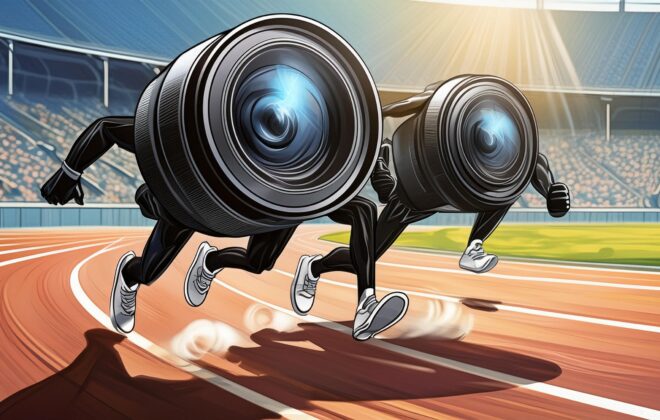Tips for Keeping Your Photography Sharp
There are a lot of things that can be done in post-processing to improve an image, but even with the magic of Photoshop if a picture is out of focus there isn’t much that can be done to correct it. The best way for a clear and sharp image is to get it right in camera. So here are some tips on keeping your photography sharp.

Shutter Speed
It can be hard to notice sometimes when the shutter speed is set too slow, and often this is a result of a cameras automatic settings. But when it comes to keeping an image sharp even the slightest movement can have a negative impact on the picture if the shutter is too slow. Sometimes this is intentional but most of the time it is not.
A workaround for this is to select the shutter priority mode on your camera. This allows you to set the shutter manually and the camera will automatically set the aperture. Then you can set a faster shutter speed if necessary to capture the movement.
The rule of thumb for capturing sharp when hand-holding the camera is, that you shouldn’t handhold a camera at shutter speeds slower than the equivalent focal length of the lens. For example, let’s say you have a lens set at 50mm, then don’t set the shutter speed to less than 1/50 second. Or, if you are using a zoom lens at 100mm aim for 1/125th second. Note: if you are shooting super wide at 10mm for example, don’t think you can handhold at 1/10th of a second. I’d recommend a tripod if going that slow.
Use a Tripod
A tripod cuts down on camera shake from the photographer’s hand. During times of night photography or even in bad lighting it is recommended to use one if you can.
Another tip when using a tripod is using a shutter release or the cameras built-in timer. This is especially useful when doing night photography in combination with a tripod. Just like the shutter release causes a little camera shake, so does pressing your finger on the button to take the picture. Check and see if your camera has a shutter lock feature. This lifts the shutter before taking the picture to reduce camera shake from the shutter for night photography.
Image Stabilization
There are two types of image stabilization. The first is built into the lens and the second is built into the camera. Depending on the company who makes it, it might be called something different but it works the same.
When the stability is built into the lenses. The lenses have elements suspended inside that are constantly moving to compensate for the movement caused by not holding the lens still. Instead of placing the stabilization in the lenses some camera companies will design it into the camera. The sensor shifts to compensate for the camera movement. Stabilization is really useful for longer heavier telephoto lenses because the extra weight ads to lens shake.
Note: stabilization does not help with capturing moving objects easier. It really only works to compensate for camera shake when photographing still objects. It also isn’t necessary when using a tripod, so if you don’t need it, shut it off to save on battery life.
Lens Quality
When it comes to buying cameras and lenses your money will always be better spent on a lens than a camera. Every year camera manufacturers come out with new cameras, but spending money on a good quality lens and taking care of it, the lens can last much longer than a typical camera will. The lens that comes with most camera kits is crap. When buying a new lens look for a lens with a wide aperture, often referred to as a fast lens. Read reviews and once you get the new lens, take care of it. Add a UV filter on the front to save the glass from being damaged. Store it in a dry warm place when not in use. And don’t let your kids get their grubby hands on it.
Focus
It seems pretty clear, right? If using the autofocus function on the camera make sure it is focusing on the correct location. When focusing pay attention to where you are focusing. For example, when taking a picture of a person or an animal you want to focus on the eyes.
Sharpen in Post
Depending on your camera settings, if shooting in RAW or not, and any of the previously mentioned your image likely won’t be perfectly in focus. When looking at the image it can look at little soft. If that is the case it can be sharpened a bit in post. Your cameras RAW processing software will have a sharpening option, or if using Photoshop or Lightroom you can sharpen the image a bit. But be aware sharpening does not solve the problem of an out of focus image. If it is out of focus it is out of focus. A soft image, however, can be sharpened.
Depth of Field
When playing with aperture and using a narrow depth of field we can get some lovely shots but it also means you need to be more precise on making sure what you want to be in focus is. Any movement might move the subject out of focus.
In Summary
When it comes to keeping it sharp it isn’t as simple as just pointing and shooting a picture. There are a lot of things that can affect sharpness to keep in mind depending on the situation you find yourself photographing in.
Tags In
Related Posts
Leave a Reply Cancel reply
This site uses Akismet to reduce spam. Learn how your comment data is processed.
Categories


